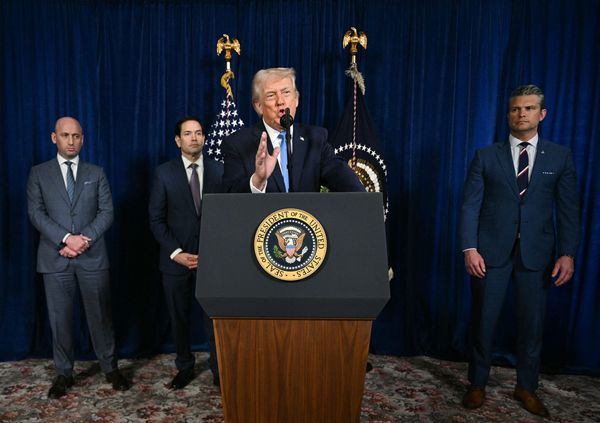If a theory about the physical world is experimentally testable and then verifiable, it will stop existing in the realm of metaphysics and become a part of physics. No matter how weird or vague a theory may seem to be, it only needs to be workable in this sense for it to be a theory of reality.
Some examples of theories whose predictions the human sense may not be equipped to understand fully or are altogether counter-intuitive include the bending of light, gravitational waves, black holes, and quantum physics. Scientists noticed the first three possibilities in the theories of Albert Einstein. They were intriguing but at the same time were also unsubstantiated. It took scientists many decades of work to figure out how and why they exist in the universe and how to test them.
Cosmic inflation
There are also some theories that we currently don’t have the methods to test. These theories may be logically consistent and may even arise straightforwardly from the inferences of well-established physical laws. Such ideas are better called ‘speculative science’. Some of them are quite famous. One is string theory, which uses advanced mathematics to explain some of the mysteries of the universe today, such as why the force of gravity is much weaker than the other fundamental forces.
Another example of a speculative theory is the multiverse, which physicists also call ‘bubble universes’. We have a lot of evidence to indicate that an event called the Big Bang created many aspects of our universe as we know it. But there is no reason for us to think that a Big-Bang-like event happened only once or that it won’t happen again in future. Instead, it may have happened many times before and might even be happening still, yielding multiple copies of universes.
The expanse of space – which contains everything both accessible and inaccessible – is infinite. Shortly after the Big Bang, scientists believe our own universe rapidly expanded in volume in a very short time. This phenomenon is called cosmic inflation. It is a popular (but currently unverified) explanation for the fact that some distant parts of the universe have very similar physical characteristics, which would have been possible if they had once been very close together before being suddenly separated. And there are hardly any models of cosmic inflation that don’t also predict the possibility of other universes out there.
Possibility of ‘Big Bangs’
Another (unverified) idea that supports the possibility of a multiverse is primordial gravitational waves. It posits that when our universe went through cosmic inflation, some parts of the spacetime fabric could have expanded more quickly than others, creating spacetime ‘bubbles’ that developed into ‘pocket’ universes.
From the point of view of cosmology – the study of the universe’s past, present, and future – we don’t know what there was before the Big Bang, what caused the Big Bang, the sequence of events in the moments preceding it or in fact what went ‘bang’. When physicists discuss our universe, they are effectively discussing things that happened right after the Big Bang. This limitation obviously means we lack a great deal of information. Even so, scientists have overwhelming evidence that an event like the ‘hot’ Big Bang happened.
Fundamentally, the possibility of there being multiple universes arises when we add to this substrate the idea of an eternally inflating spacetime fabric that sets up and gives rise to Big Bangs.
Room at the frontiers of physics
Physicists are also interested in knowing whether such universes – if they exist – have any internal structure or complexity. This is to say whether each universe has any internal composition and unevenness. Our own universe emerged from a small, hot, and dense soup of particles but today matter is distributed through space in a more uneven way, giving rise to interesting differences between one part of the universe and the next. If other universes also have such internal unevenness, it could be the difference between them being lifeless and boring versus thriving with life.
Over time, the frontiers of physics have been able to make room for many abstract and rarified ideas, like quantum entanglement and dark matter, using a combination of advances in theory and clever experiments and observations. It is similarly possible the concept of the multiverse will become grounded some day in the tenets of modern physics after scientists find a way to test the theories that predict it.
For example, Brian Greene and Max Tegmark are two well-known physicists (both from the U.S.) who have been championing the idea of the multiverse. Dr. Greene is a theoretical physicist and mathematician and Dr. Tegmark teaches at the Massachusetts Institute of Technology. Dr. Tegmark has proposed four levels, or types, of multiverses that are possible while Dr. Greene has proposed nine. They are differentiated on the basis of their resemblance to our universe.
Is the universe alone?
To make sure we have testable theories, we need to improve them in a way that they make falsifiable predictions. (In the philosophy of science, falsifiability means that if a particular hypothesis is invalid, it should be possible to prove conclusively that it is so. A hypothesis being unfalsifiable is one of the markers of pseudoscience.)
These improvements can be supplemented with better observations of the radiation leftover in our universe from the Big Bang, acquiring a better sense of curvature of and variations in spacetime, and data from experiments with subatomic particles that yield more precise values of the universe’s fundamental constants.
We won’t be able to achieve all of these goals in a single lifetime – but the ball has been set rolling to check whether our universe, like ourselves, is alone.
Qudsia Gani is an assistant professor in the Department of Physics, Government Degree College Pattan, Baramulla.
- Scientists noticed the first three possibilities in the theories of Albert Einstein.
- There are also some theories that we currently don’t have the methods to test.
- Physicists are also interested in knowing whether such universes – if they exist – have any internal structure or complexity.







